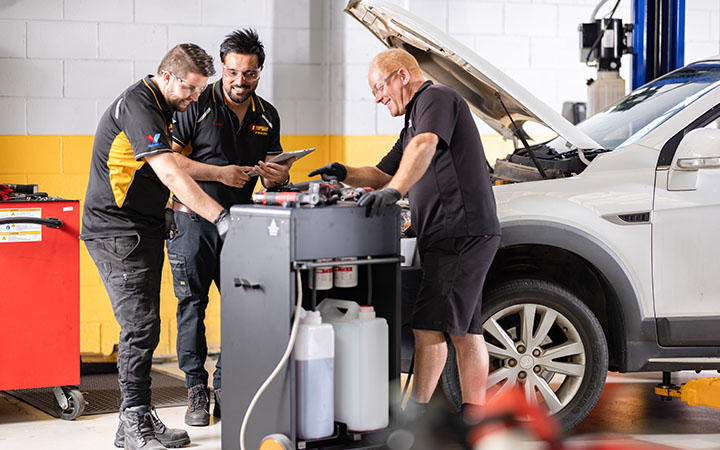When injuries or accidents happen in the workplace, workers’ compensation and other types of business insurance can provide business owners with a financial safety net. But no amount of money can compensate for a death or serious injury, so ‘prevention is better than cure’ is without doubt the best approach to take to workplace risk management.
If you want to ensure you protect yourself and your staff while also minimising disruptions to your business, make sure you check out the following steps you can take to effectively manage risks in your business.
Smart Management
Staying on top of potential safety hazards in the workplace is your legal duty as an employer. But it is also smart management. Less risk means fewer unnecessary incidents, and a happier, healthier and more productive work team.
Some risks, such as vehicles falling from hoists or jacks, are easy to identify. Others, such as illnesses caused by long-term exposure to chemicals like solvents or paints, are not as immediately obvious.
As a business owner or manager, you should be aware of the risks specific to your industry. For example, almost half of all injuries in motor vehicle workshops are to the shoulder, lower back and knees, often caused by handling heavy or awkward objects, heavy lifting and working in awkward postures.
These risks can be mitigated by providing (or having a third party provide) your staff with training that can help them avoid or minimise activities that might result in injuries. Investing in PPE and other ergonomic/assistive equipment can also pay dividends in the long term.
Our State of the Nation research has once again highlighted that finding and retaining qualified staff is a major challenge for Members. It’s now easier than ever for people to find work elsewhere, so it can be assumed that people will be less likely to tolerate an unsafe work environment and are more likely to leave and find employment working for a business they feel is willing to invest in their safety and wellbeing.
Good Housekeeping
Another very common category of injury is slips, trips and falls, which are often caused by floors in bad condition or by poor housekeeping. These can be reduced by simple steps such as maintaining slipresistant surfaces, keeping leads off the floor and stored away when not in use, cleaning up spills immediately, and not leaving objects extending into walkways or work areas.
Good housekeeping generally reflects good management and pride in the workplace. Messy and disorganised workplaces don’t instil confidence in others, including both staff and customers. Creating a culture where everyone looks after their workspace is also smart management because it can lead to higher productivity and increased repeat business.
It can also help you retain staff. As we referenced before, the skills shortage has led to increased competition for qualified technicians and mechanics, so you don’t want to be in the position of losing people because they disliked working in messy, cluttered and unsafe conditions.
Basically, the more pleasant and enjoyable you can make your premises, the better it will be for everyone (yourself included).
Complete a Risk Management Checklist
You can ensure you’ve done everything possible to manage risk in the workplace by working through a checklist appropriate for your business. Capricorn’s AutoBoost has a range of checklists to help you make sure your workshop is safe.* Log in to your myCAP Portal to access resources that will help you to identify risks and take steps to minimise them.
If you would like further information, speak to your Capricorn Risk Account Manager about other ways to reduce risks in and around your workshop.
*AutoBoost is a third party service provider. The terms of use for the version of AutoBoost made available to Capricorn Members at AutoBoost


